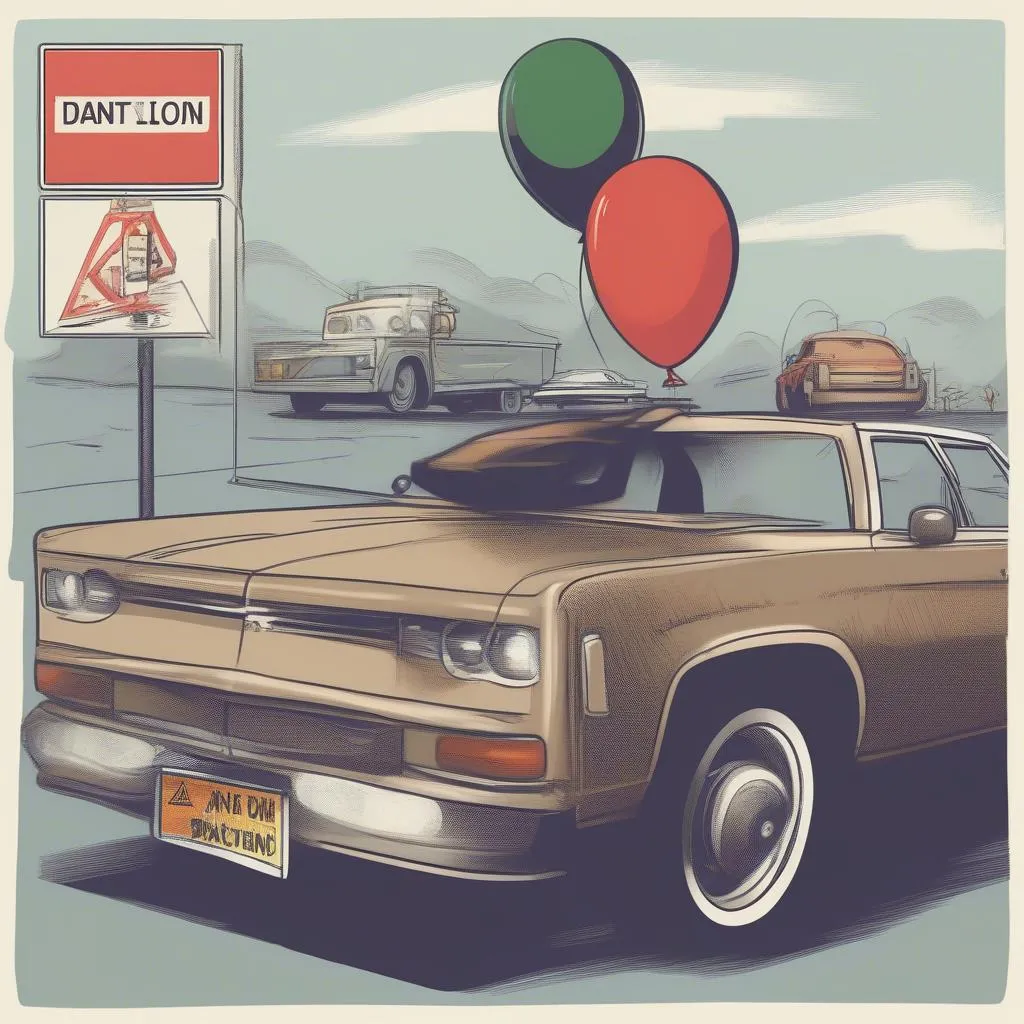Have you ever wondered what the “Car Dealer Balloon” is and how it affects your car buying experience? It’s a term you might have heard thrown around in discussions about car financing, but it’s not something most people fully understand.
Imagine yourself walking into a car dealership in California, ready to drive off in your dream car. You’ve saved up, you’ve done your research, and you’re excited. But before you get to sign on the dotted line, the finance manager throws a curveball. They mention a “balloon payment” as part of your car loan. Now, you’re confused. What’s a balloon payment, and why is it suddenly popping up in your car financing?
What Is a Car Dealer Balloon Payment?
A car dealer balloon payment, also known as a “balloon financing,” is a lump sum payment that’s due at the end of a loan term. Unlike traditional car loans where you pay off the entire principal and interest over the loan period, a balloon loan involves smaller monthly payments for a set period, followed by a significantly larger final payment to settle the remaining balance.
The Mechanics of a Balloon Payment
Think of it like this: Imagine you want to buy a new Honda Civic in Los Angeles. You find a great deal, and the salesperson suggests a balloon payment option. You’re excited by the lower monthly payments, but you need to be aware of the larger payment coming at the end.
The lender sets up the loan with smaller monthly payments. These payments are typically calculated based on a shorter loan term than the actual length of the financing. This makes your monthly payments seem more affordable but leaves a substantial amount of the loan principal outstanding.
When the loan term ends, you’re left with a large, final payment (the balloon payment) to cover the remaining debt.
Why Do Dealers Offer Balloon Payments?
Dealers offer balloon payments for a few reasons:
- Lower Monthly Payments: By stretching out the loan term, dealers can make your monthly payments look smaller and more enticing. This might attract buyers who are more budget-conscious.
- Boosting Sales: A lower monthly payment can tempt buyers who might not otherwise be able to afford a certain vehicle.
- Increased Profits: Dealers can potentially make more money by charging higher interest rates on balloon loans.
Pros and Cons of Balloon Payments
Pros:
- Lower Monthly Payments: Balloon loans can provide lower monthly payments, making a car more affordable for some buyers.
- Faster Access to a New Car: With lower monthly payments, you might be able to afford a more expensive car or upgrade sooner.
Cons:
- Large Final Payment: The balloon payment can be substantial, potentially causing financial stress if you’re not prepared.
- High Interest Rates: Balloon loans often come with higher interest rates than traditional car loans.
- Potential for Repossession: If you can’t afford the final balloon payment, you risk having your car repossessed.
The Hidden Risks of Balloon Payments
While a lower monthly payment might seem appealing, it’s crucial to consider the hidden risks of balloon financing:
- Financial Strain: You might face financial strain when the balloon payment is due. Make sure you have a plan to manage this large payment.
- Potential Loss of Your Car: Failing to make the balloon payment could result in your car being repossessed.
- Higher Overall Costs: Balloon loans often have higher interest rates, which can lead to higher overall financing costs.
Should You Opt for a Balloon Payment?
The decision to choose a balloon payment is a personal one. Consider these factors:
- Your Financial Situation: Are you financially stable and prepared to handle a large final payment?
- Your Long-Term Goals: Do you plan to keep the car for the entire loan term? If not, you might consider refinancing the loan before the balloon payment is due.
- Your Risk Tolerance: How comfortable are you with the potential risks of a balloon payment?
Alternatives to Balloon Payments
If you’re concerned about the risks of balloon financing, consider these alternatives:
- Traditional Car Loans: These offer predictable monthly payments with no surprises at the end.
- Leasing: Leasing can provide lower monthly payments than traditional loans but you won’t own the car at the end of the lease term.
Frequently Asked Questions
What are the common terms for balloon payments?
Other terms for balloon payments include:
- Balloon financing
- Balloon loan
- Balloon mortgage
Is a balloon payment legal?
Yes, balloon payments are legal in most states. However, regulations may vary, so it’s essential to understand the specific laws in your state.
How common are balloon payments?
While once more common, balloon payments are less popular today due to the potential financial risks.
Who should avoid balloon payments?
People with limited financial resources or those who are unsure about their future financial situation should avoid balloon payments.
Conclusion
A car dealer balloon payment can seem enticing with its lower monthly payments, but it comes with hidden risks.
Be sure to carefully consider your financial situation, your risk tolerance, and your long-term goals before deciding whether a balloon payment is right for you.
 Car Dealer Balloon Payment Warning
Car Dealer Balloon Payment Warning
If you’re considering a balloon payment, be sure to thoroughly research the terms and conditions of the loan, including the interest rate, the balloon payment amount, and the consequences of failing to make the final payment.
Have any further questions about balloon payments? Leave a comment below!
Need help understanding the intricacies of your car’s electronics? We offer specialized services for European car diagnostics. Contact us via Whatsapp: +84767531508 and our experts are available 24/7 to assist you.